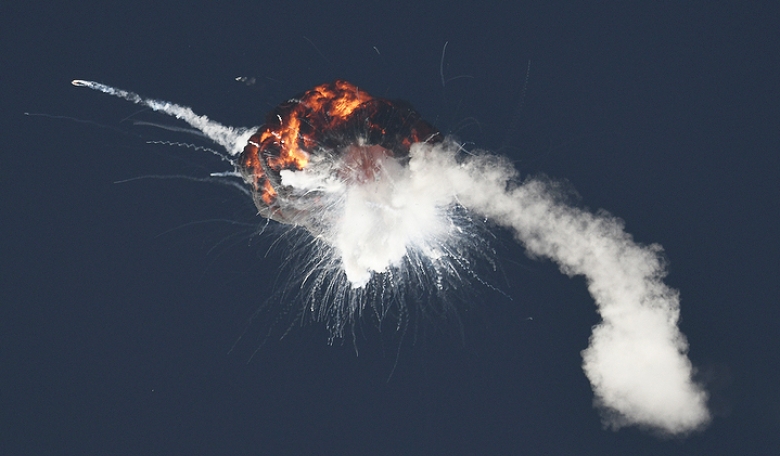Firefly Aerospace declared the first test flight of its Alpha rocket an “anomaly” this week when the rocket exploded shortly after its launch from Space Launch Complex 2 at Vandenberg Space Force Base, California (September).
According to an official statement from Firefly, “Alpha experienced an anomaly resulting in an early end of the mission” some two minutes into the flight, during its first-stage ascent. No injuries occurred.
The company, based in Austin, Texas, plans to eventually launch payloads of up to 1,000 kg twice a month to low Earth orbit on the two-stage, 29 m tall Alpha with its 2 m wide fairing, carrying payloads of up to 630 kg to Sun-synchronous orbits. Firefly advertises a “starting price of $15 million” for its service.
In a video of the launch featuring commentary by “Everyday Astronaut” blogger Tom Dodd, (posted on Spaceflight Now), an initially enthusiastic Dodd begins to question the flight’s progress about a minute-and-a-half in, about the time Alpha would have reached the point of maximum aerodynamic pressure.
“This is when you’re really testing your fuselage - is it going to hold up?” Dodd asks. “We are going through that right now, so the vehicle clearly is holding up. That is a great milestone. We might even hear max-Q called out.”
But instead, Firefly’s launch team states the rocket is “not yet supersonic”.
“Not yet supersonic. That’s maybe not great,” Dodd says. “It may be a sign that the vehicle is slightly underperforming.”
In its official statement, Firefly Aerospace said the rocket lifted off at 18:59 local time after the countdown went as expected. “While we did not meet all of our mission objectives, we did achieve a number of them: successful first stage ignition, liftoff from the pad, progression to supersonic speed, and we obtained a substantial amount of flight data.”
In the video, several seconds after the launch crew announces the rocket finally does reach supersonic speed. A possible wobble in the trajectory and puff of smoke precede the fireball.
The statement adds, “While it’s too early to draw conclusions as to the root cause, we will be diligent in our investigation, in partnership with the FAA and Vandenberg Space Force Base. We will utilise the data we obtained from the test flight and apply it to future missions. Our engineers are currently combing through thousands of lines of ground and flight system telemetry in order to better understand what occurred.”
Firefly announced a $75 million investment and $100 million secondary transaction in May 2021 and said it planned to raise another $300 million in 2021. In addition to hoping to provide launch services, Firefly was awarded a $93.3 million contract under NASA’s Commercial Lunar Payload Services programme to deliver science payloads to the Moon on its Blue Ghost lunar lander.
“Shoot,” Dodd says after the explosion. “Aw, man, shoot. That was impressive, though. That was impressive.”











